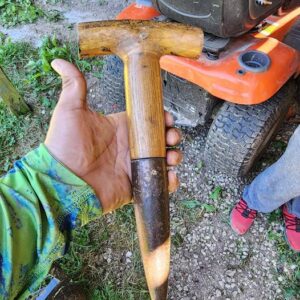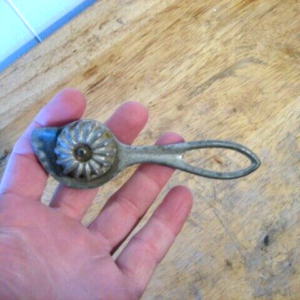The Antique Bottle Capper: History, Usage, and Legacy
History
The antique bottle capper emerged in the late 19th and early 20th centuries during a period of significant innovation in the beverage industry. Before the advent of modern bottling techniques, beverages like beer, soda, and various tonics required secure sealing to ensure freshness and prevent contamination. The first patented bottle capper, created by William Painter in 1892, revolutionized this process. His invention, the “Crown Cork Bottle Capper,” used a metal cap with a corrugated edge and a cork seal to tightly close bottles, preserving the beverage inside.
Usage
Antique bottle cappers played a crucial role in the production and distribution of bottled beverages. These devices were manually operated and required a fair amount of physical effort. The user would place a bottle under the capper, position a crown cork cap on the bottle’s mouth, and then pull down a lever or handle to crimp the cap onto the bottle. This process ensured a tight seal, protecting the contents from spoilage and maintaining carbonation for fizzy drinks.
In smaller breweries, soda factories, and even home kitchens, these cappers were essential tools. Their simplicity and effectiveness made them popular among small-scale producers and hobbyists who wanted to bottle their own beverages. As industrialization progressed, larger factories adopted automated capping machines, but the manual capper remained a staple for smaller operations.
Legacy
The legacy of the antique bottle capper is evident in its lasting influence on modern bottling technology. While contemporary capping machines are automated and highly efficient, they are built on the principles established by early bottle cappers. The need for a secure, tamper-evident seal has remained a constant in the beverage industry.
Collectors and enthusiasts of antique tools and machinery hold these cappers in high regard. They are valued not only for their historical significance but also for their craftsmanship and durability. Antique bottle cappers are often displayed in museums, breweries, and private collections as symbols of a bygone era of manual labor and ingenuity.
Moreover, the rise of the craft beer and homebrewing movements has rekindled interest in antique cappers. Many hobbyists appreciate the hands-on experience and authenticity that comes with using vintage equipment. Restoring and using antique bottle cappers has become a niche hobby, connecting modern brewers with the industry’s rich history.
Conclusion
The antique bottle capper represents a pivotal moment in the history of beverage bottling. Its invention marked a significant advancement in preserving and distributing drinks, and its influence can still be seen in modern bottling technology. As both a collectible item and a functional tool for enthusiasts, the antique bottle capper continues to be a cherished piece of history, embodying the spirit of innovation and craftsmanship from a bygone era.



